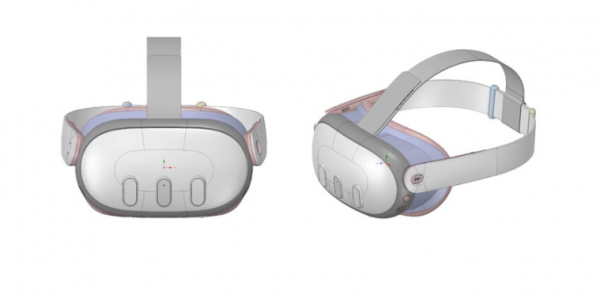Meta Quest 3 Headset to Have Color Passthrough Mixed Reality
The upcoming Meta Quest 3 headset will have a mixed reality color passthrough, Meta has now confirmed.
In the company’s earnings call, Meta boss Mark Zuckerberg told investors that the company would launch its next-generation consumer headset later this year and that the device would have a Mixed Reality function. The Quest 2 is the company’s current consumer headset so by “next-generation consumer headset”, Zuckerberg is most certainly referring to the Quest 3 headset.
Meta Reality refers to the company’s color real-world passthrough technology that debuted on its professional-grade Quest Pro headset.
The Quest Pro headset leverages two front black and white cameras for generating a sparse 3D point cloud before reprojecting the camera views to match the point cloud’s depth. It also offers color passthrough and uses a high-resolution central color camera.

In October, Meta announced that the Quest 3 headset would launch in late 2023 and that the headset would be priced in the range of “$300, $400 or $500.”
With the addition of the color passthrough functionality to the consumer-focused standalone headset, we would see it being marketed as a mixed reality rather than a purely virtual reality headset like the Quest 2 and at a much lower price tag for consumers, compared to the Quest Pro that costs $1,500.
In September 2022, YouTuber and XR hardware analyst SadlyItsBradley (Brad Lynch) leaked apparent schematics of the Quest 3 headset.
The Quest 3 headset shown in the leaks didn’t have eye tracking and face tracking. However, it featured pancake lenses that allow for a much slimmer design than that of the Quest 2 headset. The Quest 3 schematics also had a depth sensor to provide advanced mixed reality functions. It is also likely that Meta already had multiple prototype candidates and the leak that came out last year was just one of the many iterations.
The biggest improvement in the Quest 3 is in its new generation processor, the Snapdragon XR2 Gen 2 which is yet to be announced. Most of the current mainstream virtual reality headsets are powered by the first-generation XR2, then Gen 1. These include headsets such as Pico 4 and Quest 2. The older generation XR2 Gen 1 is a variant of the smartphone chip Snapdragon 865 that first came out in early 2020.
Last year, Qualcomm and Meta announced that they were going into a multiyear partnership for the development of next-generation Snapdragon XR chipsets. YouTuber and XR hardware analyst Brad Lynch, citing a source, wrote that the Quest 3 headset would be powered by the XR2 Gen 2.
According to import logs, the upcoming but yet-to-be-announced XR2 Gen 2 chip is based on the Snapdragon 8 Gen 2 which was released recently. The 8 Gen 2 chip has a GPU with a performance-per-watt that is roughly 50% more and a 150% more peak performance when compared to the XR2 Gen 1 chips. Such a chip would deliver high-fidelity graphics on high-resolution displays.
https://virtualrealitytimes.com/2023/02/01/meta-quest-3-headset-to-have-color-passthrough-mixed-reality/https://virtualrealitytimes.com/wp-content/uploads/2023/01/Quest-3-headset-600x314.pnghttps://virtualrealitytimes.com/wp-content/uploads/2023/01/Quest-3-headset-150x90.pngTechnologyThe upcoming Meta Quest 3 headset will have a mixed reality color passthrough, Meta has now confirmed. In the company’s earnings call, Meta boss Mark Zuckerberg told investors that the company would launch its next-generation consumer headset later this year and that the device would have a Mixed Reality function....Rob GrantRob Grant[email protected]AuthorVirtual Reality Times - Metaverse & VR
